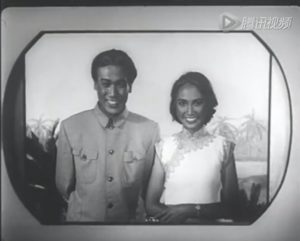Since Liu Cixin’s win of the Hugo Award in 2015, “The Three-Body Problem” and more recently the movie adaptation of his short story “The Wandering Earth” (2019) have dominated the reception and discussion of Chinese science fiction both within and outside of China. His success has had a profound impact on China’s science fiction landscape, where writers today must navigate a complicated web of commercial and ideological interests (see Chen Qiufan’s speech). But the reception of Liu’s works also reveals how science fiction as a genre is frequently conceptualized as a metric of technological and economic development. References to China’s revolutionary history and aesthetics play hereby often an important role as the negative foil for China’s so-called rise. As the seemingly least „productive“ and most „irrational“ period in modern Chinese history, the Cultural Revolution in particular appears in various works as the ground zero of the current futurological imagination.
One important focus of this course was therefore on socialist science fiction narratives and the question how narratives of the future change within shifting paradigms of development. On the one hand science fiction from the 1940s up to the early 1970s certainly followed general literary trends such as the rejection of urban modernity as a symbol of Western colonialism and capitalist exploitation. But on the other hand, the landscapes of Maoist utopianism are, despite their pastoral idealism, nevertheless deeply saturated with technology.

For instance, in Tian Han’s play Rhapsody of the Ming Tomb Reservoir 十三陵水库畅想曲 from 1958, which was turned that same year into a movie, the last act offers a rare vision of China’s socialist future as it was being envisioned in mainstream culture production during the industrialization efforts of the Great Leap Forward. In Tian Han’s machinized arcadia China has found a cure for cancer and an anti-aging formula, everybody can afford folkloric silk gowns, people travel in private helicopters and “Beijing” cars,[1] and there is commercial space travel.[2] It is a place, where “atomic boats” enable the type of poetic scenery appreciation previously only enjoyed by the ancients, but without the violence and disease of “feudal times.”[3] The science fiction subgenre of the scientific discovery novel captures even more vividly the unfettered scientific romanticism of the 1950s. For instance, Chi Shuchang’s 迟叔昌classic Elephants without Trunks 割掉鼻子的大象details a Lysenkoist dream of how a research centre in the Gobi Desert develops a method to breed elephant-sized pigs.
The aim of this course was to gain deeper and more nuanced insight into the various topics and aesthetic practices that have shaped the history of Chinese science fiction as well as the changing relationship between narratives of the future and scientific and technological thought. Since most of the works we studied did not yet have a translation into either English or German, some of the translation work we did during the semester is published on this blog. All translations were produced collaboratively in the class room and reflect the workshop character of this seminar.
Students:
Mireille Burkhardt,
Juri Mischler
Veronika Probst
Instructor:
Jessica Imbach
[1]A detail that also appears in popular science fiction literature of the 1950s such as the famous story “Elephants without Trunks” (割掉鼻子的大象, 1956) by Chi Shuchang 迟叔昌.
[2]The movie adds to Tian Han’s tableau of prosperity a tree, which carries multiple fruits, a video communication device, and the end of the Taiwan conflict.
[3]Tian Han 田汉, „Shisanling shuiku changxiangqu [Rhapsody of the Ming Tomb Reservoir]”, in Tian Han quanji [Collected Works of Tian Han], 第1版, Bd. 6 (Shijiazhuang: Huashan wenyi, 2000), 309.